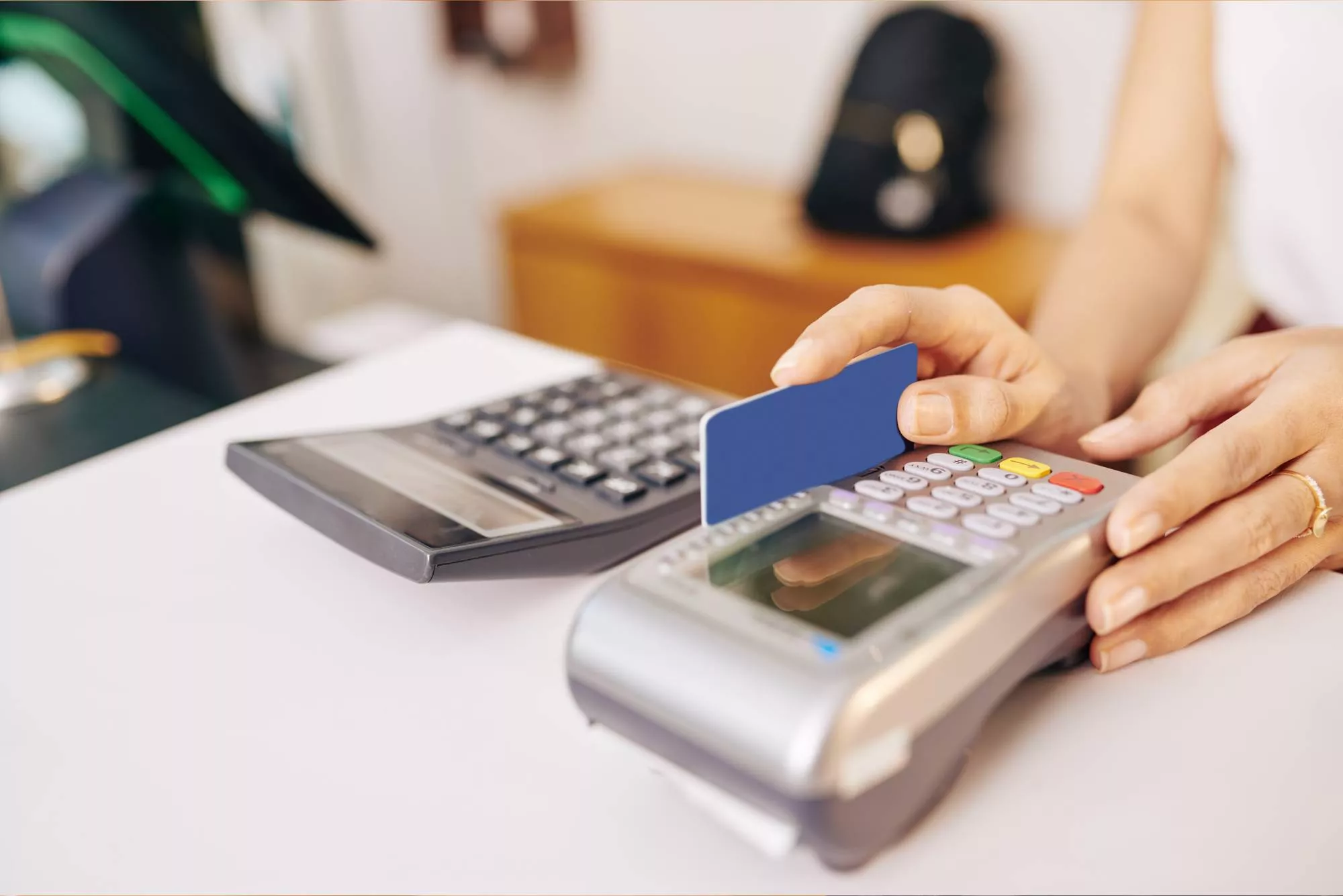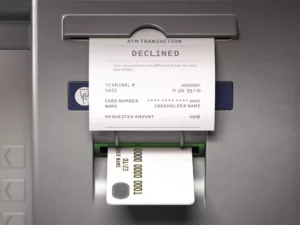
TABLE OF CONTENTS
- What Is a False Decline?
- What Is a Hard Decline?
- What Is a Soft Decline?
- What Is a Merchant-Initiated False Decline?
- What Is a Bank-Initiated False Decline?
- How Does a False Decline Happen?
- Why Does a False Decline Happen?
- How Can You Reduce False Declines?
- How Can a False Decline Affect Your Business?
- Steps to Prevent False Declines
- Final Thoughts
It’s no secret that you work hard for every sale. But every month, you may lose a significant portion of sales you’ve earned without realizing it. In this article, we discuss this phenomenon, called “false declines.” We’ll explain what false declines are, how they happen, and how to prevent them so you can capture every sale you’ve earned.
What Is a False Decline?
Before exploring prevention, let’s define a false decline.
You have a customer who has spent time on your website. They’ve browsed your selection, added their favorites to the cart, and decided to make a purchase. Only, at this point, they have their legitimate credit or debit card declined. You may have even experienced this yourself as a consumer. Not only do you lose the sale, but you may have permanently lost your customer over the poor experience. False decline is the term used to describe this situation.
More formally, a false decline is a legitimate transaction blocked by fraud prevention systems. Put differently, a false decline is the loss of a sale from poorly applied or overzealous loss prevention tools.
There are a few classifications for false declines. We’ll explore those next.
What Is a Hard Decline?
A hard decline is not always a false decline. It’s a decline that cannot be immediately resolved or a permanent decline. If something went wrong with the transaction and subsequent attempts to run the card, this will, in all likelihood, become a hard decline.
Some reasons you may see a hard decline include:
- Closed bank account
- Invalid card
- Card reported lost or stolen
- An international card (if your system’s setup prevents international purchases)
Of the above examples, the international card decline may be an example of a false hard decline. Your system may have default settings that prevent purchases from bank accounts located outside the country. This means that it may, for example, decline purchases from a legitimate customer who is visiting and making a purchase within the U.S. while paying with their home country’s card.
What Is a Soft Decline?
A soft decline, on the other hand, is a temporary transaction decline. The customer can, if they so choose, reattempt the purchase and achieve a different result.
Some reasons you may see a soft decline include:
- Unusual purchase activity
- Insufficient funds
- Incorrect information entered
- Unusual information entered (for example, shipping and billing addresses that are too far apart)
What Is a Merchant-Initiated False Decline?

A merchant-initiated false decline is a transaction declined by your system’s fraud settings. These merchant-side fraud settings run on the back-end of your processing software and look for indicators like shipping speed, transaction size, shipping address vs billing address, average transaction size, and customer profile to determine what transactions should proceed.
If any of these indicators don’t look quite right to your built-in fraud protection systems, the transaction will decline. Unfortunately, as an online business, you won’t necessarily receive notice in real-time that the transaction declined, so there will rarely be a remedy unless the customer contacts you or otherwise resolves the issue at their end.
What Is a Bank-Initiated False Decline?
A bank-initiated false decline is a legitimate transaction that declines because of fraud verifications run by your customer’s bank. Your customer’s bank is looking for indicators such as the customer’s typical purchasing habits, their customer profile information (comparing data entered with the transaction to the data they have on file), the balance remaining on the card, the location of the purchase being made from v. the last known location of the customer, etc.
If any of these indicators look “off” to the customer’s bank, the transaction may decline until they either receive verification from the customer that it is safe to proceed or the customer resolves the data discrepancy.
How Does a False Decline Happen?
A false decline is a legitimate transaction that is rejected by a fraud prevention tool. To understand how a false decline happens, it’s helpful to picture the life cycle of a transaction.
When you and your customer start a transaction, that transaction quickly flows through several verifications or checkpoints. The transaction is initiated by your gateway, verified by your payment processor, cross-referenced with the customer’s bank, and later settled between those three parties (you, your customer’s bank, and your credit card processor). While this process happens within a few seconds, each point is verifying something unique and thus creates a potential snag for a false decline.
Why Does a False Decline Happen?
A false decline happens when something about the transaction gets inaccurately flagged as fraudulent. This inaccurate flag occurs because there are several verifications put into place by your system (like your POS system or payment gateway), your payment processor, and your customer’s bank.
They usually base these automated checks and verifications on generalized assumptions about what fraud looks like. These generalized assumptions are not necessarily true for every transaction. Remember, you are intimately knowledgeable about your customers, their buying behaviors, and your business, so your instincts about a transaction may be more accurate than these built-in assumptions.
How Can You Reduce False Declines?
Nearly every online business has to deal with false declines in one way or another. The problem is that many online retailers don’t realize it. Without customers alerting you to an issue or proactive research (like reading this article), false declines may go entirely undetected. On the contrary, it may look like your fraud prevention software is doing a great job.

If you’ve noticed or are looking into your false decline count, there’s a bit of give and take you’ll have to consider. You want your systems to catch and eliminate fraud, meanwhile expending as few legitimate transactions as possible. Here are some ways to reduce your false declines:
- Take a look at your fraud prevention systems and provider. If your system is outdated, for example, there are likely smarter technologies out there that can better tell the difference between fraudulent and legitimate sales.
- Improve customer communication. Can you offer a live chat or quick phone call that easily allows customers to contact you if their card declines? Quick communication can save many of these otherwise lost transactions.
- Analyze your fraud data. When a transaction declines, you’re given some information about that transaction. Can you determine what happened with each declined transaction? For example, maybe your fraud parameters are too loosely defined or the fraud characteristics your software is looking for are not accurate for your business’ customer base.
How Can a False Decline Affect Your Business?
False declines generate an estimated $386 billion in annual revenue losses. And that number continues to grow. The internet crimes these fraud systems look to prevent generate only an estimated $4.2 billion in annual losses. This means that, in many cases, the cure may be a bigger problem than the one it’s looking to solve.
Here are some definitive ways false declines may affect your business:
Reduced Revenue
While fraud is a genuine issue, the cost of fraud for businesses is often less than the lost revenue from false declines. It’s important to keep these issues in perspective when deciding on a loss prevention strategy.
Poor Customer Experience
It doesn’t feel good to have your card rejected. After their card declined, 6 out of 10 shoppers ‘decreased or halted card usage at the business altogether.’ It can be a frustrating, disappointing, and embarrassing experience for the customer, which may deter future purchases at best, or hurt your reputation at worst.
Steps to Prevent False Declines
To prevent false declines, take these steps:
1. Identify the Source of False Declines
What are the common traps customers are running into throughout your store? This is best investigated manually by examining your declines and analyzing them for accuracy. If you find a common theme, you may need to rethink the fraud protection in place that’s causing the declines.
2. Look at Your Fraud Assumptions
You may have a built-in bias within your fraud assumptions that cause a disproportionate amount of false declines. For example, many systems automatically decline first-time customers making large purchases, customers who ship to an address far from their billing address, or orders from a certain country.
Look at your fraud assumptions to see what is true for your business and what isn’t. A first-time high ticket ban, for example, may not make sense if your average transaction is high.
3. Contact Customers
If you catch a decline, you can contact your customers to discuss the problem. You’ll be able to better gauge the situation and come to a favorable resolution that leaves the customer feeling cared for and your business with the sale.
4. Stay Up-to-Date
If it’s been a while since you updated your fraud protections, you’re likely missing out on some improvements. As technology gets better, so too does fraud protection. There are now advanced algorithms that can help monitor transaction data and weigh common fraud factors to more intelligently decline transactions than was previously available.
Final Thoughts
While false declines tend to cost businesses more than fraud itself, allowing fraudsters to run rampant on your website is not a solution. Instead, it’s important that you keep your fraud systems up-to-date, stay vigilant with customer communication, review your transaction data for patterns of false declines, and make adjustments where you see fit. No one knows your business or your customers like you do, so use your instincts when reviewing fraud data.
Sources:





